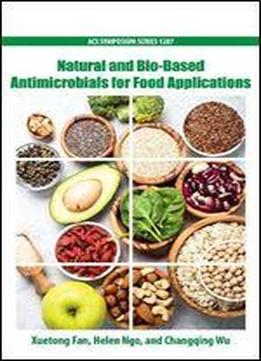
Natural And Bio-based Antimicrobials For Food Applications
by Xuetong Fan /
2019 / English / PDF
36.4 MB Download
It is estimated that foodborne microorganisms in the United States cause 48 million sicknesses, 128,000 hospitalizations and 3,000 deaths each year. Food spoilage due to decay-causing microorganisms is also an issue in both developing and developed countries with 30-40% annual loss of fruits and vegetables. Synthesized antimicrobials (preservatives) are commonly used by the food industry to enhance microbial safety and increase shelf-life. However, food and agricultural industries are experiencing a lack of potent antimicrobial agents to secure the safety and maintain the quality of food products. Some synthetic preservatives may produce harmful by-products and damage the environment. There is also increasing incidence of antibiotics-resistant pathogens which has drawn great concern from the scientific communities and public health professionals. Therefore, there is increasing interest in the use of natural antimicrobials to enhance microbial safety, reduce spoilage and extend the shelf life of food. Natural antimicrobials are from plants, microorganisms and animals. They cover a wide variety of compounds including phenolics, terpenes, bacteriocins, peptides, proteins, natural polymers, fatty acids (lipids), and organic acids. Overall reviews of well-known natural or bio-based antimicrobials are first presented. The book then discusses antimicrobials of plant sources and their applications in foods and animal health. A number of chapters address the combinations of natural antimicrobials with non-thermal processing technologies to achieve additive and synergistic effects. The use of natural antimicrobials in packaging and coating, as well as both well-studied and novel biobased antimicrobials are discussed. Furthermore, the needs for toxicological evaluations of natural and bio-based antimicrobials are presented and protocols are recommended. Moreover, there is discussion in many of the chapters on the modes of action, mechanisms, and industrial aspects of applying natural or bio-based antimicrobials.











